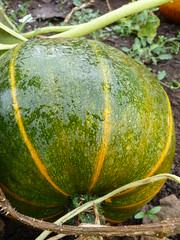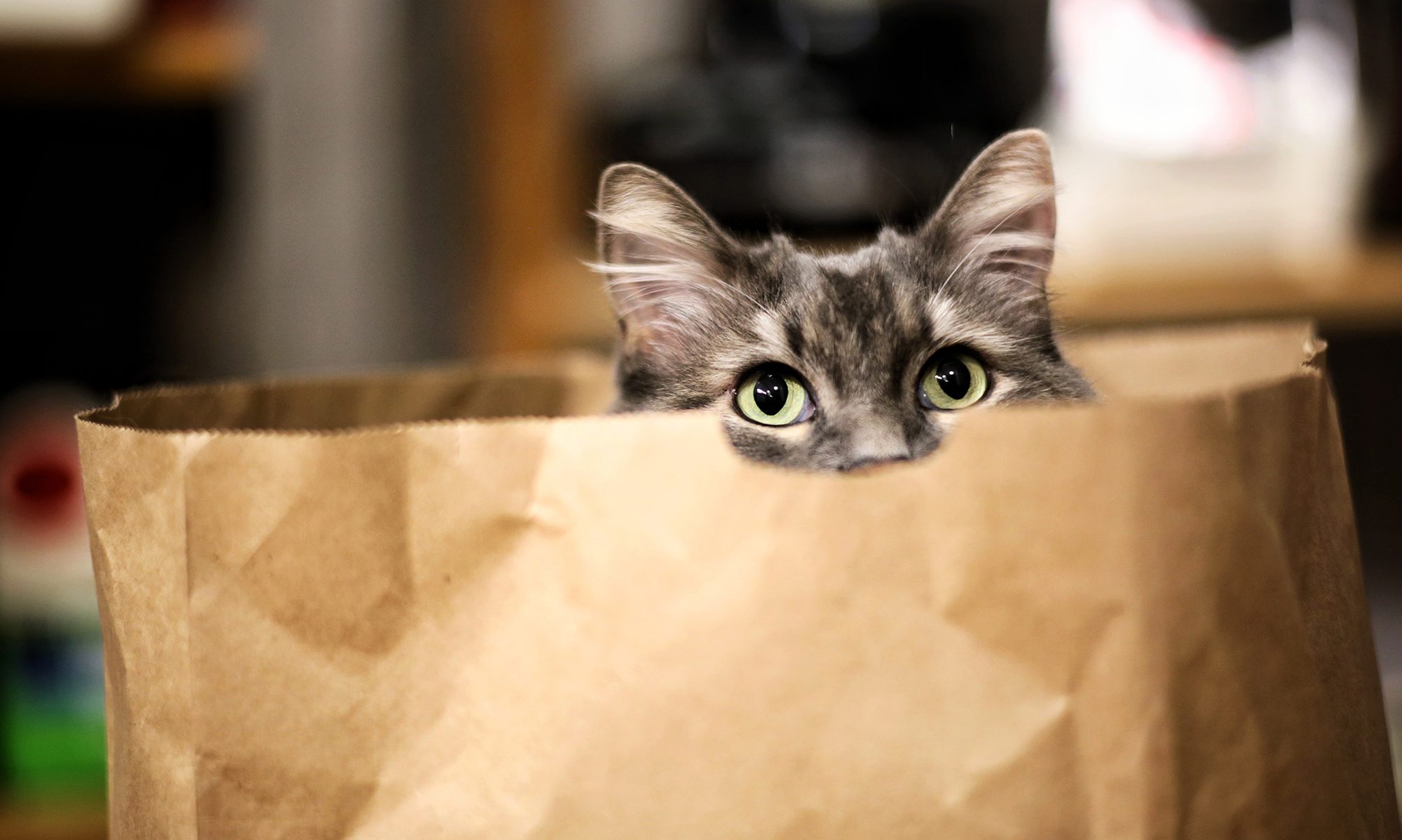
One of the things I did to modify Eric’s diet after finding out about his polycystic kidneys was to reintroduce squash into his diet. In the past several years, I had dropped feeding vegetables to my cats entirely, largely because I was feeding them whole ground animals and canned Wellness and Evo on the side. I figured that the canned food was providing plenty of vegetable matter. Now that Eric’s sick, however, I’m much more draconian about feeding mostly raw food—partly because it’s better for him, and partly because Eric prefers it over the canned, which is strange because in the past his sole food preference, near as I could tell, was HOORAY FOOD OM NOM NOM NOM.
I added the squash back into Eric’s diet largely because I remembered reading back in the day that squash helps trap nitrogenous waste that would otherwise make it into the bloodstream. Today I went on an article hunt to see whether this had any sort of scientific basis, or if it was one of those raw feeding myths that get passed around because it sounds so damn good.
Assessing the Evidence
Therapeutic use of fiber in chronic kidney disease (or, if you’re old-school, chronic renal failure) is much more well-studied in humans than it is in cats. There seems to be some evidence that the consumption of soluble/fermentable fiber leads to increased excretion of nitrogen via poopin’ vs. peein’, thus lowering the amount of nitrogenous waste circulating in the blood and therefore eliminated by the kidneys. But what about cats?
I’ve found one decently reliable study that specifically looks at cats. It’s by researchers at Iams, so it’s not exactly woo-woo; research from the Iams lab is about as mainstream as it gets. The researchers found that feeding moderately fermentable fiber (mostly beet pulp and fructo-oligosaccharides) to cats decreased serum nitrogenous waste and increased fecal nitrogen excretion. The study proposed the following hypothesis as to why this would happen:
The beneficial bacteria in the cat’s lower intestine feed on the moderately fermentable fiber, creating short-chain fatty acids (SCFAs) in the process. SCFAs not only do all sorts of nifty things, such as keep the intestine cells happy and healthy, they also increase blood flow. The increased blood flow to the intestine results in more urea being circulated to the intestines, and the bacteria, which also produce urease (an enzyme that denatures urea), convert the nitrogenous wastes to carbon dioxide and ammonia, which are then incorporated into the bacteria themselves and then pooped out by the cat, as opposed to circulating to the kidneys to be peed out.
This sounds really good and really plausible, and the results show pretty unequivocally that fermentable fiber helps reduce the urea load in the serum, which means less work for damaged kidneys, but keep these things in mind:
1. This study is really small, involving only sixteen cats.
2. They were fed the diets containing fermentable fiber for relatively short periods of time—two weeks total for with an active waste collection period of eight days.
3. The decreased waste could be due in part to the decrease in protein digestibility. The study noted that the protein digestibility decreased to 87-91% with the fermentable fiber blends.
4. As far as I could tell, they didn’t actually actually draw any blood and run blood panels; they looked at urine and feces only.
So the verdict right now is: it probably does help a little bit, but as with anything scientific, the people in the white coats need to study it more. Given that steamed squash doesn’t contain anything harmful to cats, and given the potential benefits vs. potential dangers (yes, there’s a decrease in protein digestibility from the fiber, but Eric’s getting so much high-quality protein in his food that I’m not worried about marginal decreases at this point), I decided to go ahead and give Eric a heaping tablespoonful of pureed squash per day, which comes to about 10-15% of his total food. I created a mix from a gem squash harvested straight from my garden and organic butternut from the store. He loves it. I don’t need to mix it in with the food; it’s a lurid orange dot amidst the raw rabbit and Nature’s Variety, and he often eats it first. I suppose we’ll find out whether it does anything when we test his blood again in January.
Fiber Content for Various Squash Species
If you’re curious about the fiber content of different species of squash, here’s the information I looked up on the USDA National Nutrient Database per 100 grams of raw squash (unless otherwise noted):
Butternut squash: 2.0 g (86.41% water)
Acorn squash: 1.5 g (87.78% water)
Generic winter squash: 1.5 g (89.76% water)
Pumpkin: 0.5 g (91.6% water)
Canned pumpkin: 2.9 g (89.97% water)
Canned pumpkin has almost double the fiber content of raw butternut (on a dry matter basis) and six times more than raw pumpkin, which is interesting. It looks like you can get more bang for the buck by feeding canned pumpkin. Eric likes the fresh stuff much better, however, so I’m sticking with it for now.

Great site! In my ongoing research info feline nutrition for my own cats (and the advice I extend to others) I came across your site. I am in the midst of changing fiber sources for my cats too – my formerly-IBD kitty initially could not have any vegetable matter, but canned pumpkin seems to be going OK now. I am switching for the reasons you mention – prebiotic/nitrogen trap idea. Great looking and well organized website 🙂
Hi Tina,
Glad you like the site! Good luck with feeding the ex-IBD kitty. Pumpkin seems to be really well tolerated across the board, and I’m glad to hear your guy is doing okay on it.
Hmm, let’s see if we can get my name to show up when I leave comments, instead of just “Admin”….
Thank you much for the assessment and useful info. It’s been a couple of years I think since you first wrote this article… any updates on Eric’s health and your use of butternut squash? I know that a good balance of Vitamin A in a cat’s body is essential, among other vitamins, and I’m pretty sure all of the winter squash varieties are rich with it.. I wonder if this, too, is affecting your kitties’ health?
I make sure both of my cats get a supplement of vitamins A and E to keep their kidneys and bladder healthy, but I’ve been experimenting with how they get those vitamins. I couldn’t help but notice how much my cats love to nibble on squash…. perhaps this could be a good fit?
Anyway, would love to hear an update, thanks!